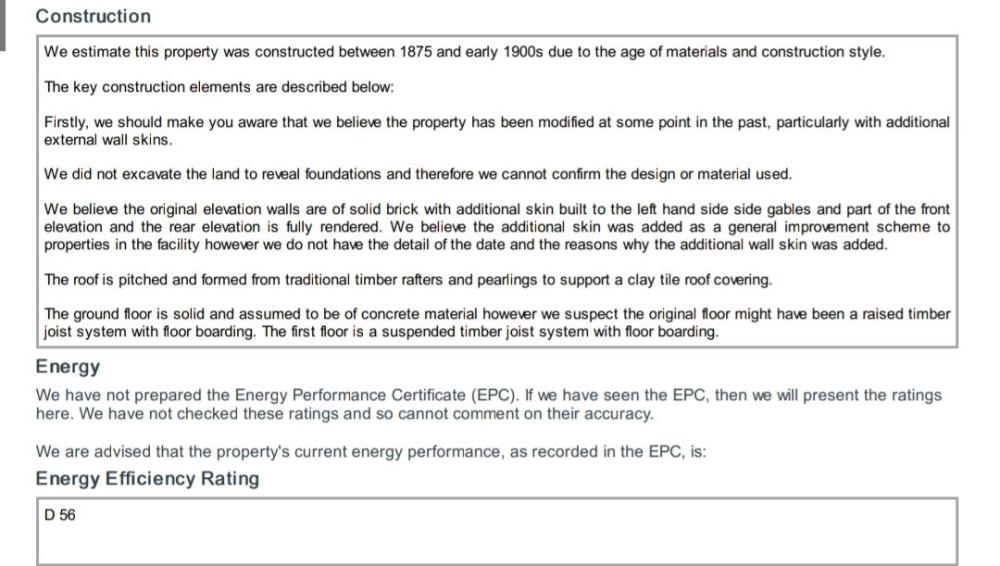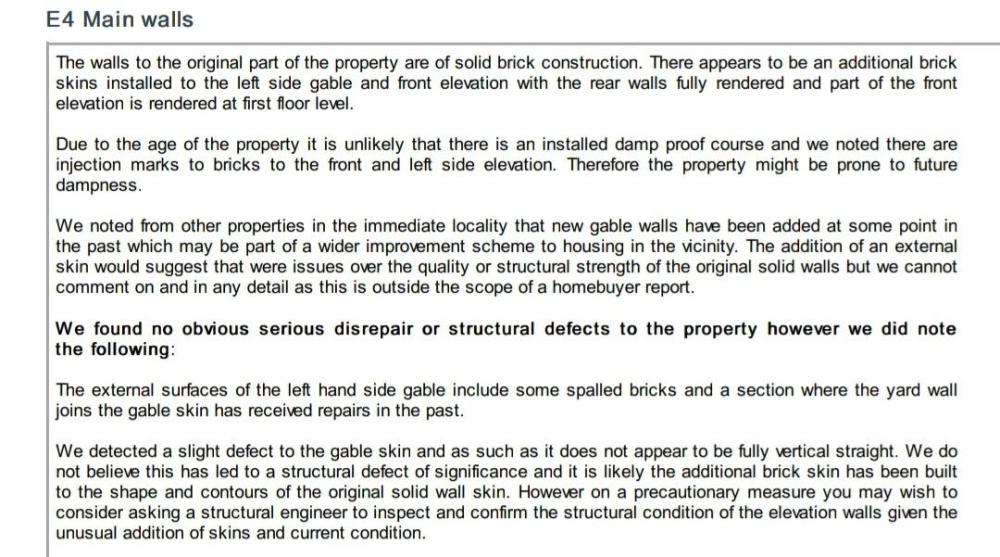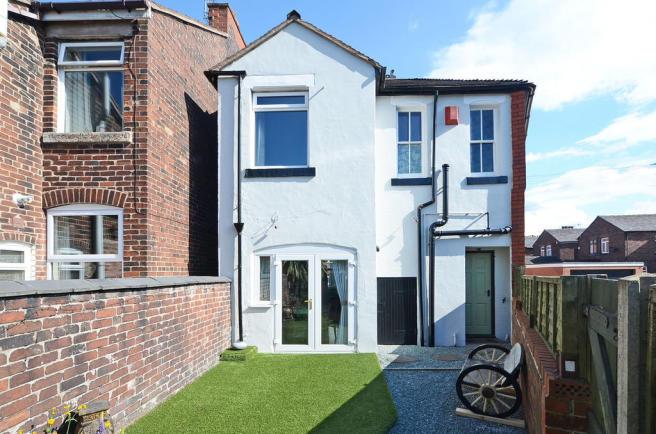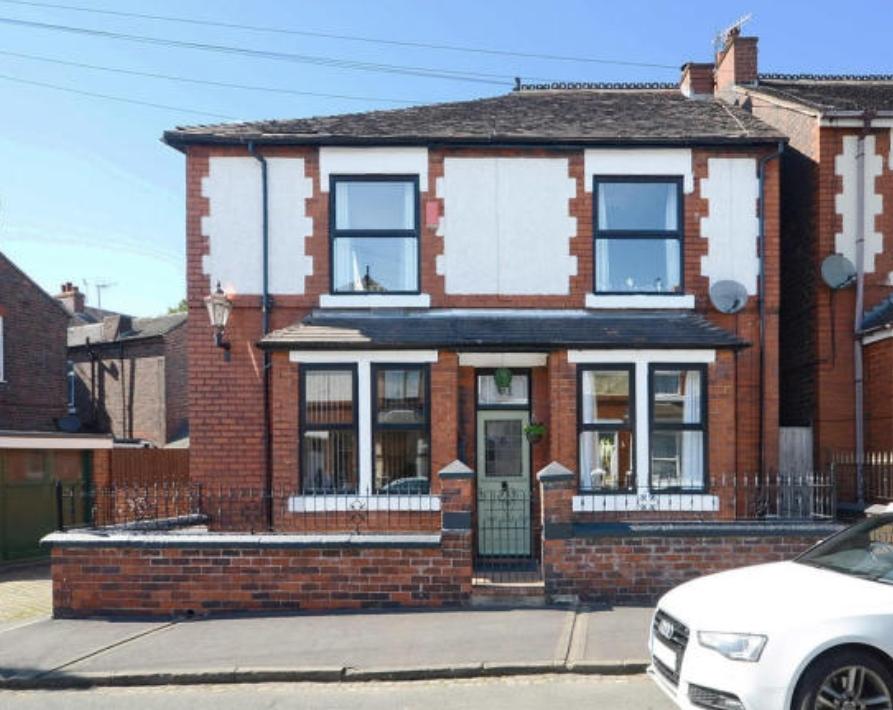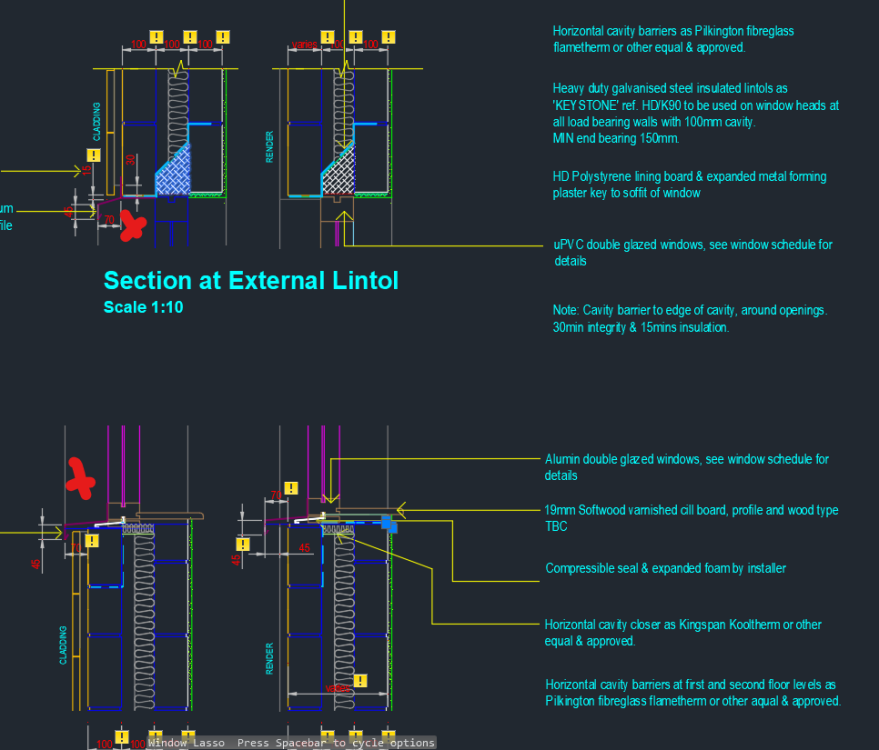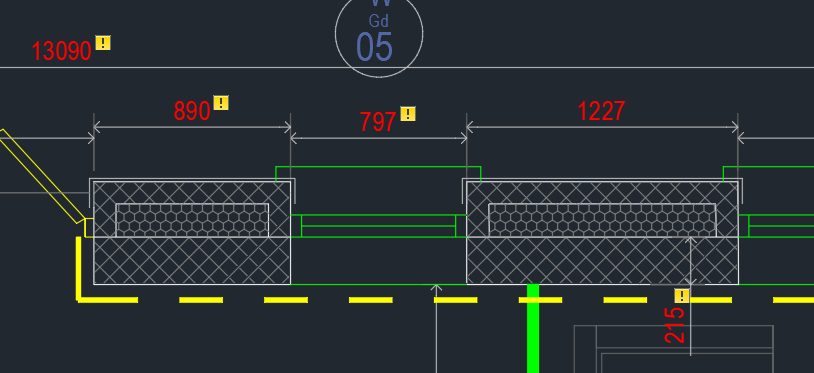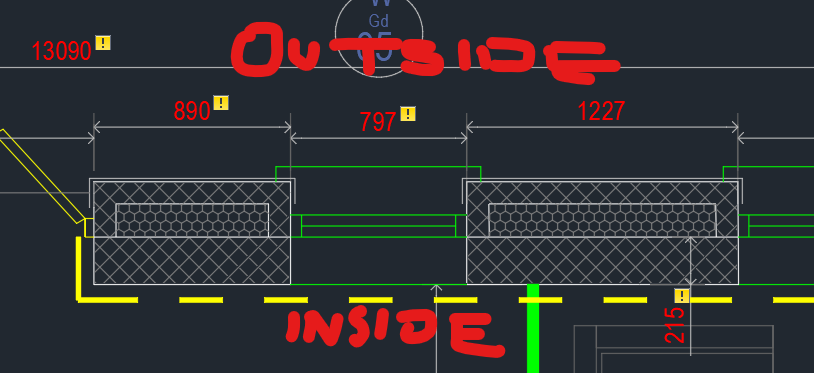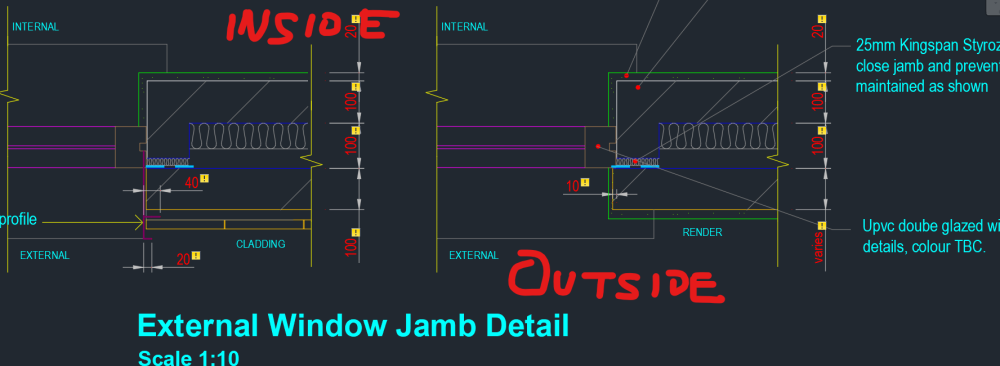Search the Community
Showing results for tags 'cavity wall'.
-
Hi. This is my first post. We bought a house around 4 years ago. I'm not sure of the exact year it was built but we have records that somebody requested to turn it into a pub in 1905 but was denied permission. A survey estimated it was built between 1875 and 1900. It's detached but very close to one neighbour and all the other houses in the street are terraced. When we had a survey completed, we were told that the house was originally built with a single skin but a second skin was added at a later date, and the surveyor said he'd not seen anything like it before but spotted the same on some other houses nearby. I'm not sure if this is the case for all 4 walls which I need to try and establish. My house is horribly cold. It takes a long time to heat and it doesn't retain the heat. Today for example, its 10 degrees outside and only 12.5 degrees in my living room. In the recent cold weather its been as low as 8 degrees with the heating on. We have loft insulation but our EPC report assumes there is no wall insulation. We have upgraded all windows (except one original sash which has the clingfilm type cover over whilst we get around to ordering some plastic glazing and magnets). We changed the front door which was in poor condition with a hole in it. Has anybody here seen or owned a house like this? Is it likely we will be able to install cavity wall insulation? I'm not sure how wide any cavity is and whether there are width requirements when considering insulation. Any advice at all is welcome. I work in healthcare but do a bit of DIY and anything I can't do myself I like to research before contacting trades people, hence this post. Thanks!
-
For reasons you can read about in the nightmare I reported here, the rear wall of our rear extension that went up 2.5 years ago is very damp and it's likely that the mineral wool fibre that was used to insulate the cavity is also wet. I am considering my options as to how to fix this aspect of the damage (after I have found a solution to fix the parapet wall issue described in the other thread). In an ideal world, the existing insulation just dries out and we can leave it there. But it's not clear to me that is very likely to happen very quickly / at all. It may therefore be the case that we have to open up the cavity by removing every other brick in a row or two, and then pull out the wool fibre. I will check with my main contractor, but from recollection, the wool fibre we used was amongst the cheaper products that pass building control, so it is not rigid and should come out easily. This would then allow us to either inject foam or bead insulation (in fact bead insulation can be injected through a small hole of only 22mm diameter). I'm thinking of something like the bead insulation described here. The majority of the wall is actually glazed, so the cavities are actually quite small: a triangle above our sliding doors which is about 5m wide by 1.3m high (at the apex of the triangle); and another triangle above our window which is about 3m wide by 1m high (at the highest part of the triangle). The problem is that the wall will be wet still. It is sealed from the outside (except at the parapet above, where the seal is crap and split/missing in various places) with a brick and mortar sealant and that is likely to impede its ability to dry quickly. So is there an injectable (or pourable) cavity insulation material that performs well in a damp wall and might even assist with drying it out? Sounds like wishful thinking, but I'm hoping some clever company has invented something. The only alternative I can think of is to remove the wet insulation, then try to run some dehumidifying ventilation into the cavity, or remove the wet insulation and live with no insulation until it is dry. Just wondering if anyone has any experience, albeit more likely upgrading a much older wall, not one that was built so recently.
- 44 replies
-
- damp
- cavity wall
-
(and 1 more)
Tagged with:
-
I'm editing drawings (in the absence of my architect, who is poorly), to widen the cavity between block leaves from 100mm to 150mm. I noticed a couple of descrepencies in and around the window reveals (1) window position different between the lintol & cill (see image 1) (2) block return at return different between the blockwork and the detail drawings (see image 2 & 3) My questions, please (1) should the block returns be on the inner or outer leaf at reveals, or can I choose? (I have a preference for outer leaf, as there is a 140mm inner leaf on back wall - but maybe this is not the only consideration) (2) should windows be fixed to inner or outer leaf, or can I choose? (3) when I widen the cavity to 150mm, there will be some of the insulation of steel insulated lintol exposed - can I skim this, or is there further detail required? TIA, James IMAGE 1 IMAGE 2 - Blockwork showing return on outer leaf at reveals IMAGE 3 - Jamb Details showing return on outer leaf at reveals
- 9 replies
-
- cavity wall
- window position
-
(and 2 more)
Tagged with:
-
Hi, I am looking at potentially installing insulated plasterboard on outside facing walls. I have two rooms on the first floor that are exposed on 2 sides and are by far the coldest rooms in the house. I am about to remove the carpets and install new flooring, sand/plaster were required and refinish. I am wondering if there is a good time to potentially install some insulated plasterboard on the outside facing walls of each room. I have an unfilled cavity wall Stone (outside) - Gap - Brick wall (inside), is there any reason I should not do this? Anything in particular I should be mindful off?
- 1 reply
-
- insulation
- old house
- (and 4 more)
-
The outer leaf for most of the house's cavity walls are going to be flemish bond. We'll cut bricks in half to make 'header' part of the bond as you'd expect. What I was wondering is whether we should widen the cavity slightly to make the laying easier. Half a standard brick is 215 / 2 = 107.5mm whereas the standard brick width is 102.5mm. The blade of the grinder will take a bit off, but it's enough work to cut bricks in half let alone cut a slither off. The cavity is to be 100mm mineral wall. Should we tweak the cavity width to say 105mm to make life easier or could that create it's own issues? I discussed it with a pair of brickies, one said no as he likes a 'tight cavity' whereas the other said yes and the compromise was to go with 102.5mm, but I wanted to see what others thought.
- 28 replies
-
Good morning all, I have been asked by the building control to render the wall as it has severe weather exposure. However due to the planning requirement we have to have brick finish. Any suggestions or way around this ? Many thanks
-
Firstly hello from Cornwall, Having browsed for the last year or so both here, GBF and on the old ebuild site I have to say what a fantastic source of info such places offer. Myself and partner are about to begin our self build I'm hoping someone can help with a particular question. Our plot is unusual in that the majority of the house is at 1st floor level (onto garden) and extends outwards from the lower level spanning an access alley between the house and a retaining wall. Because of the site elevations the upper level (where external to the lower level) will be on a B&B floor (tetris most likely) which needs to meet the lower level and sit on the outer skin of blockwork. Therefore we need to build the lower GF level in block - proposal is full fill 100mm block - 200mm glass batts - 100mm block (7n) all parge coated with a foundation detail matching Denby Dale / Golcar. Whilst I don't like block it works at supporting the upper level, is DIY able and I can focus on the detailing - sites like tonyshouse etc help greatly with this. At first floor level we want to use either timber frame or SIPS and whilst we aren't looking for passive standards (the B&B effectively kills this), efficiency is high on our list. Quite simply does any one have a detail showing a well thought out join between a cavity block lower level and timber / sips upper that focuses on air tightness and continuity of insulation? In particular I'd like to build to the outer leaf line of the lower level to maximize internal space and avoid an odd external detail at the join. External finishes are render lower GF & horizontal cedar / larch cladding 1st floor. My line of thinking was to build straight off the outer leaf but 100mm blocks won't work with 172mm SIPS which makes me think a platform construction is the way forward... Whether we opt for SIPS / timber frame (quotations are currently out and the same question is being asked to suppliers) I intend to mitigate the sole plate bridging issue with a course of thermal block under the plate plus 40mm of XPS sheathing extending 250mm above and below. Hopefully this will suffice. Please excuse the very DIY attached detail, still learning sketchup! Any help much appreciated! Josh BuildHub1.pdf
- 13 replies
-
- timber frame
- cavity wall
-
(and 1 more)
Tagged with:

